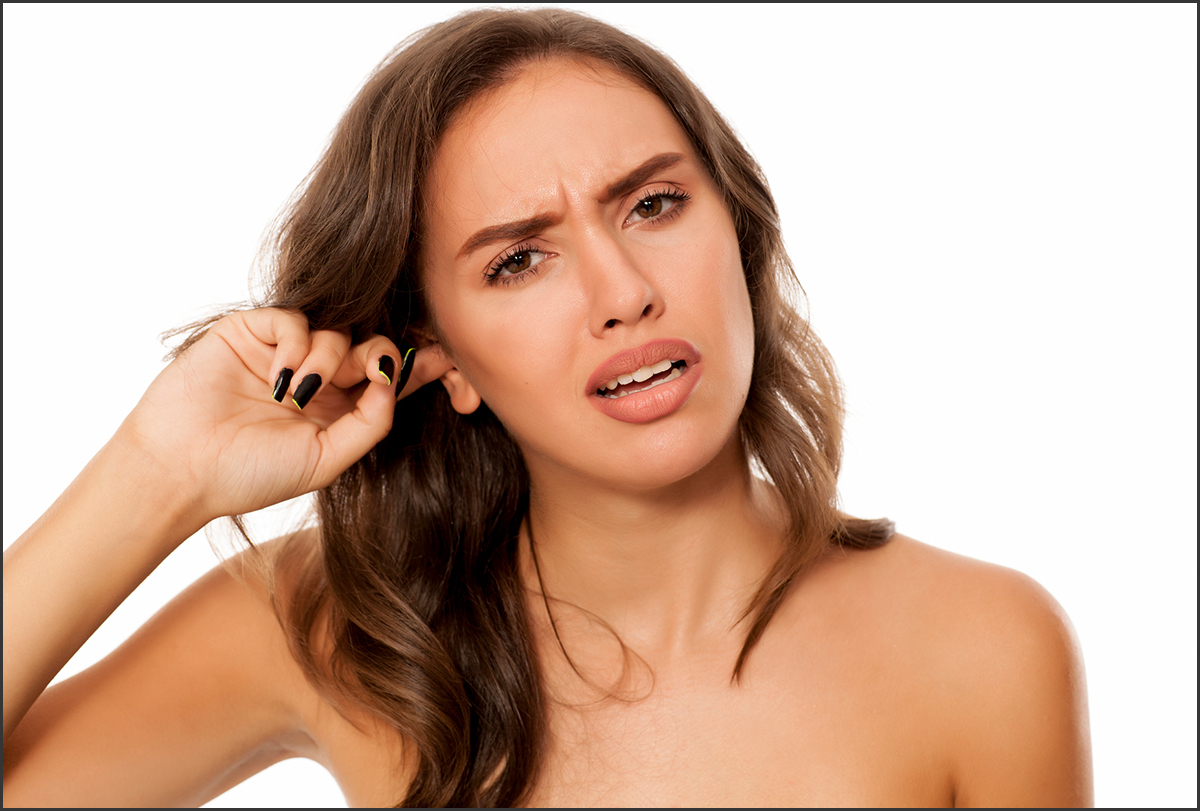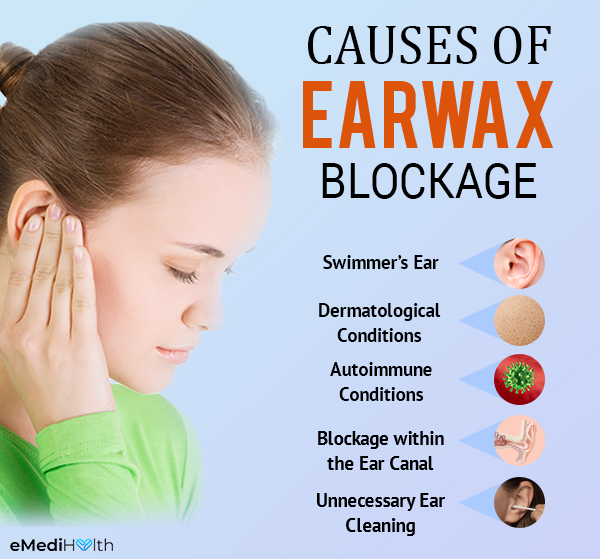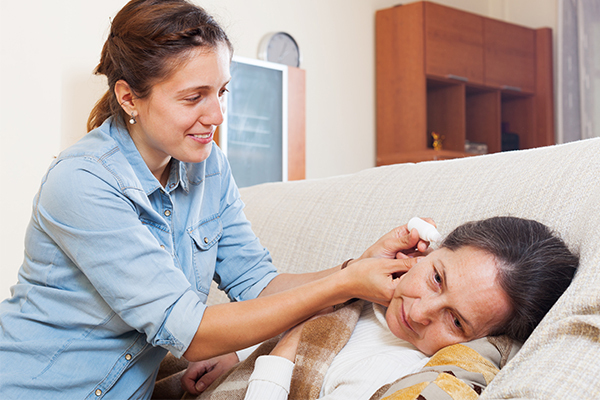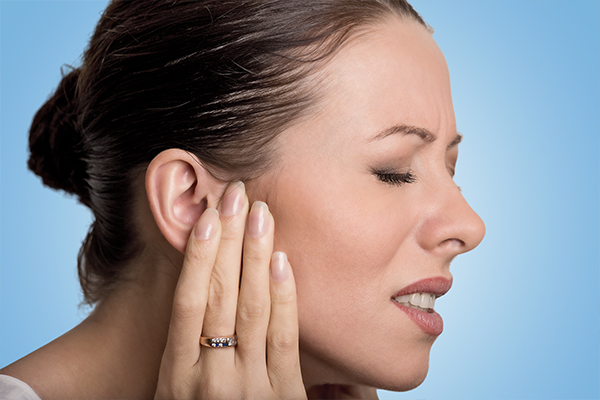In this article:
The ear canal is lined with sebaceous and ceruminous glands that produce a greasy, viscous substance called cerumen, more commonly known as earwax.

This oily secretion lubricates the ear canal and forms a protective covering over the delicate skin of the inner ear to trap invading germs, dust, and other irritants. Moreover, it serves as a medium for carrying dead skin cells and dust out of the ear.
Earwax is vital for the health of your ears but it can be a problem if it is secreted in excess amounts or accumulates over time.
Why Does Earwax Accumulate?

Earwax naturally migrates from the back of the ear canal toward the ear opening, assisted by the constant jaw motions while talking, chewing, and yawning. Once it reaches the ear opening, earwax dries up, turns flaky, and falls out of the ear on its own.
Any disruption in this natural migratory process can lead to the progressive buildup and hardening of cerumen within the ear canal known as impaction. An overproduction of cerumen can also overwhelm the self-cleaning mechanism of the ear and cause an earwax buildup or blockage. (1)
Causes of Earwax Buildup/Blockage

The following factors can lead to the buildup and impaction of cerumen, resulting in an ear blockage:
- Certain ear infections such as swimmer’s ear can cause a narrowing of the outer ear canal due to inflammation and can pave the way for earwax accumulation.
- Dermatological conditions such as eczema are characterized by hardened wax secretions and dry, flaky skin, both of which can contribute to excessive cerumen accumulation.
- Autoimmune conditions such as lupus can also lead to excess earwax buildup.
- Some trauma or blockage within the ear canal can also trigger an overproduction of cerumen, eventually resulting in a blockage.
- Unnecessary ear cleaning by inserting your fingers, cotton swabs, or other invasive tools into your ear canal can push the wax deeper into the ear and lodge it against the eardrum.
- Osteomata, which is characterized by the development of harmless bony protrusions in the external ear canal, can disrupt the self-cleaning mechanism of the ear.
- The regular use of earplugs, music earplugs, or even hearing aids can push the earwax further into the ear canal, leading to blockage.
Signs and Symptoms of Earwax Buildup
Some of the signs and symptoms of the accumulation of excessive earwax include:
- A feeling of blockage or fullness in the ear
- Earache
- Tinnitus, or ringing in the ear
- A foul smell coming from the ear
- An uneasy sensation inside the ear
- Hearing problems, including temporary deafness (2)
- Itchiness in the ear
- Ear discharge
- Vertigo (dizziness)
Medical Treatment for Earwax Blockage
Your doctor decides the appropriate treatment after examining the extent of earwax impaction and ruling out an ear infection or a pierced or perforated eardrum.

The standard treatment options for earwax removal include:
1. Ear drops
OTC hydrogen peroxide or enzyme-containing ear drops can be administered daily for a few days to dissolve the impacted earwax so that it can move more easily out of the ear canal.
2. Ear irrigation
This process involves flushing your ear canal with a controlled, pressurized flow of warm water to dislodge and expel the impacted/excess earwax. Although ear irrigation can be done using a metal syringe, an electronic ear irrigator is a safer and medically preferred option. (3)
3. Microsuction
Microsuction is a slightly discomforting but largely painless medical procedure that requires the patient to stay very still as the earwax is suctioned out of the cavity.
The doctor may also use a small device such as a curette or a cerumen spoon to manually remove the impacted wax, usually when all the other methods have failed.
How Is Earwax Blockage Diagnosed?
Diagnosing an ear blockage involves the following steps:
1. Medical history
Your ENT doctor or otologist will first review your medical history and symptoms.
2. Ear exam
The doctor will then look inside your ear cavity through a magnifying tool called an otoscope for any sign of impacted earwax.
3. Banji’s test
Sometimes the impaction is so severe that it clogs the entire ear canal such that the doctor is unable to see through it and has to resort to other diagnostic techniques such as Banji’s test.
It involves pulling the pinna, or the outermost part of the visible ear, making room for the sound to travel through the congested ear canal and momentarily improving the patient’s hearing. However, if there is no improvement in sound perception, impaired hearing may be due to something other than cerumen impaction. (4)
Risk Factors
The following risk factors can make you increasingly predisposed to developing an earwax-induced blockage:
- Certain anatomical features such as a narrow or underdeveloped ear canal can make you prone to earwax buildup.
- Some people, such as those of East Asian descent, produce a less fluid form of cerumen that is more likely to clump and form a blockage.
- This condition is more common in people with a history of impacted earwax and recurrent ear infections.
- People with excessive hair growth in the ear canals have a higher likelihood of developing earwax blockages.
- People tend to secrete harder and drier earwax as they get older, which is then more prone to impaction.
Possible Complications

Earwax blockage due to cerumen accumulation/impaction can lead to the following complications if it is not treated properly or if it escalates to a serious degree:
- Ruptured eardrum
- Middle ear infection
- Outer ear infection such as swimmer’s ear
- Vertigo characterized by dizziness and disorientation, typically when the earwax gets pushed against the eardrum or tympanic membrane
- Persistent tinnitus, marked by a ringing or buzzing sound in your ear
When to See a Doctor
Prompt medical assistance is particularly warranted if you experience any of the following symptoms:
- Persistently high fever
- Constant nausea
- Severe vertigo that can disrupt your body balance to such a degree that it becomes difficult for you to walk
- Sudden loss of hearing
- Yellow or green pus-like discharge from the ear canal
- Acute ear pain or bleeding after inserting an ear cleaning object into the affected ear canal
Final Word
Your ear is a self-cleaning organ that gradually but systematically eliminates the old earwax. Thus, deep cleaning your ears is not required unless there is enough earwax buildup to cause symptoms such as earache or hearing problems.
There are some self-care measures and home therapies that may assist with the expulsion of excess earwax but refer to an ear specialist before starting self-treatment.

- Was this article helpful?
- YES, THANKS!NOT REALLY


